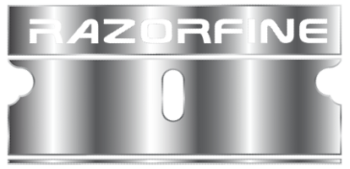Philip Kaufman’s epic tribute to the coolest, baddest mothers to ever hold college degrees
 |
“The Right Stuff” is a huge, ballsy chronicle of the early years of America’s space program, from Chuck Yeager breaking the sound barrier in 1947 to Gordo Cooper’s Mercury flight – the final flight of that maiden program and “the last time America would send a man into space alone.”
Phillip Kaufman manages to corral Tom Wolfe’s book into an epic tribute to the coolest, baddest motherfuckers to ever hold college degrees. That was one of the requisites of those astronaut candidates – a college degree and being under six feet tall, just the right size to squeeze into those ‘cap-sools’ and become – in the words of Chuck Yeager, who was left behind in the program because he didn’t have a college degree – “spam in a can”.
The film was released in 1983 and it sunk The Ladd Company faster than Gus Grissom’s souvenir loaded capsule after he prematurely blew the hatch. At that time, well into Ronald Reagan’s first term, the public – at least the movie going public – wasn’t ready for a three hour film that, on the surface, was awash in unabashed patriotism. At least, that’s the way I saw it. The weekend the film was released, my brother Jimmy and I were at The Chinese Theatre looking at the posters in the courtyard. (The Chinese is owned by The Mann’s Corporation and the posters to all the movies being shown at The Mann’s Theatres in Hollywood were on display.) When we saw the poster for “The Right Stuff” we just looked at each other and shook our heads.
We were poor brown folk and we hated Reagan.
A few days later I went to see the film alone. The theatre was almost empty. But from the opening Appalachian drawl of Levon Helm’s narration to Sam Shepard as Chuck Yeager walking away triumphantly from the burning wreckage of his NF-104, his face plastered with third degree burns and still chompin’ on that Beemin’s , I was hooked. Here was a film like I’d never seen – a perfect blend of post-Watergate, post-Vietnam cynicism and Hero worship. I had grown up on late 60’s and 70’s gritty realism and despair. Frankly, by that time, in my early twenties, I was tired of the messages of films like “The Deer Hunter” and “Apocalypse Now”. I was ready for Heroes and these “star voyagers” were my type of guys. They had all the flaws and insecurities of most men, but they were confident and stoic on the surface. The ‘right stuff’ that Phillip Kaufman and Tom Wolfe (in the book) preached about were the same qualities I had seen in the men I knew while I was growing up, whether they were factory workers, gang members, con artists or good, solid musicians. These men knew how and when to wear their ‘game faces’. They just didn’t walk, they strutted. And, above all, they never ever let you see them sweat or panic.
Sure, the film is flawed. It’s a little too long. Kaufman could’ve pared down the New Mexico lab test toilet humor. And, like most historical and biographical films, he takes liberties with some of the time-line of events. But when it’s on, it’s ON. From the tight ensemble acting to the exhilarating flight sequences, especially the breaking of the sound barrier, where you see that little X-1 rocket drop from the p.o.v. of the belly of that b-29, and John Glenn’s lumbering and massive lift off on that Atlas rocket set to the strains of Gustav Holst’s “Mars, The Bringer of War” from “The Planets”…
Until Clint Eastwood’s “Unforgiven” came along, “The Right Stuff” was the last great western ever made.
As far as the Special Edition 2 disc re-issue, I was disappointed with the aspect ratio, or the ‘widescreen’ format. I was hoping for letterbox, which gives more of the original screen image. But the mini-doc’s and the interviews are good, especially the cast reminiscing about partying at the bar that substituted for Pancho’s Happy Bottom Riding Club, with the snapshots showing Sam Shepard, Dennis Quaid and Fred Ward, among others, drinking hard, just like the flyboys some thirty years earlier.
So if you’ve never seen the film, or “only seen parts of it”, pop it in your player, turn off the lights, get a pillow ready for your girlfriend (because you know she’ll fall asleep halfway through it), and watch “How The Future Began”. Before you know it, you’ll be hunting down a vintage brown leather flight jacket on E-Bay, chompin’ on Beemin’s (if they still make it) and looking for all the original composers to the classical music that Bill Conti ripped off for the score.
